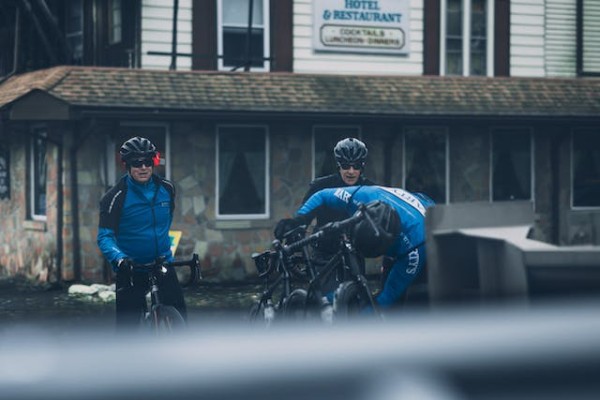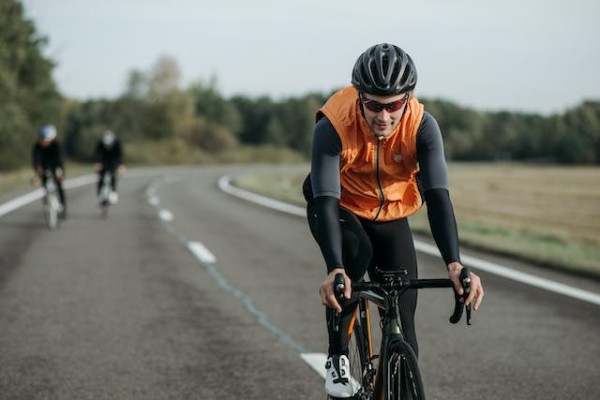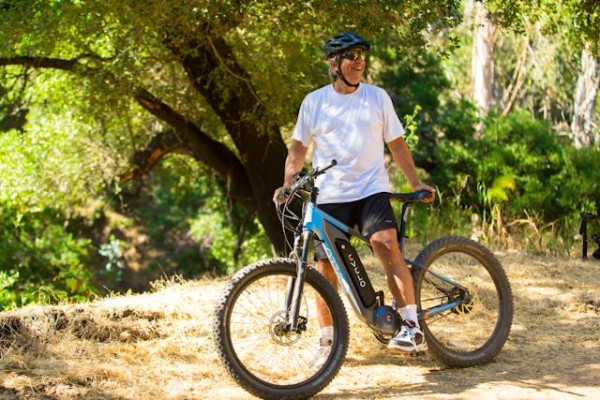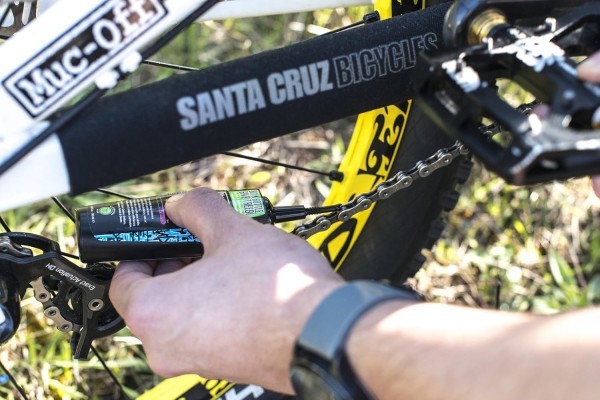Do you want to know how long it takes to get fit cycling? Well, here’s the thing – getting fit is a journey, not a destination. But don’t worry, with dedication and a solid plan, you’ll be amazed at what you can achieve on your bike.
First things first, it’s important to assess your current fitness level. This will help you set realistic goals that are tailored to your individual needs and capabilities. Once you have a clear idea of where you’re starting from, you can develop a training plan that suits your schedule and preferences.
Consistency is key when it comes to getting fit cycling. Make sure to stick to your training plan and gradually increase the intensity and duration of your rides. As you progress, monitor your progress and make adjustments as needed. Remember, it’s all about finding the right balance between challenging yourself and avoiding burnout.
So, how long does it take to get fit cycling? Well, that depends on various factors such as your starting point, your commitment, and your body’s response to training. But one thing is for sure – with dedication, perseverance, and a sense of belonging in the cycling community, you’ll be well on your way to achieving your fitness goals.
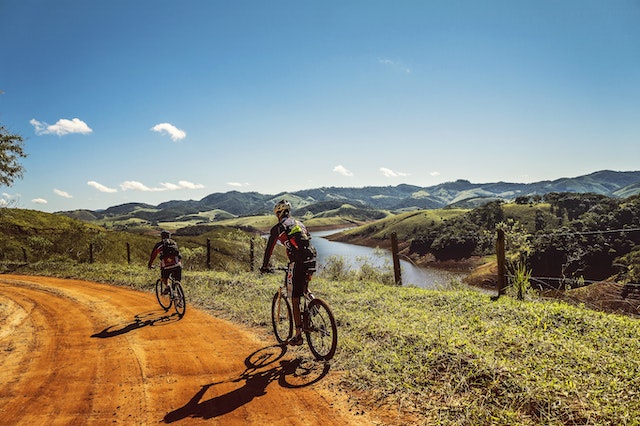
1. Assessing Your Current Fitness Level
Take a moment to evaluate how your body feels after a strenuous cycling session. Pay attention to your muscles, your breathing, and your overall energy levels. Are you feeling tired but satisfied? Or are you completely drained and out of breath? Assessing your current fitness level is an important step in understanding how long it will take for you to get fit cycling.
Now, don’t worry if you feel exhausted after your first few rides. That’s completely normal! Remember, everyone starts somewhere. The key is to listen to your body and give it the rest it needs. Rome wasn’t built in a day, and neither will your cycling fitness. It takes time and dedication to build endurance and strength.
If you’re just starting out, take it easy and gradually increase your cycling time and intensity. Start with shorter rides and slowly build up to longer distances. Focus on proper form and technique to prevent injuries and improve efficiency. Don’t compare yourself to others; this journey is about you and your progress.
Remember, progress may be slow at first, but with consistent effort, you will start to notice improvements in your fitness level. Celebrate each milestone, no matter how small, and keep pushing yourself to reach new goals. Your body’s capable of amazing things, so believe in yourself and enjoy the journey to becoming fit through cycling.
2. Setting Realistic Goals
Start by creating achievable targets for yourself when cycling to improve your fitness. Setting realistic goals is crucial in ensuring that you stay motivated and continue to make progress on your fitness journey. Remember, it’s important to set goals that are attainable and specific to your own abilities and circumstances.
First, consider your current fitness level and what you hope to achieve. Are you just starting out and looking to build endurance? Or perhaps you’re already a regular cyclist and want to increase your speed or tackle longer distances. Whatever your goals may be, make sure they are challenging enough to push you, but also within reach.
Next, break your overall goal down into smaller, more manageable targets. For example, if your ultimate aim is to cycle 50 kilometers without stopping, start by aiming for shorter distances and gradually increase your mileage each week. This way, you can track your progress and celebrate each milestone along the way.
It’s also crucial to give yourself enough time to achieve your goals. Rome wasn’t built in a day, and neither is fitness. Be patient with yourself and understand that progress takes time. It’s better to make steady, sustainable progress rather than rushing and risking injury or burnout.
Lastly, remember to enjoy the journey. Find joy in each ride, and embrace the sense of accomplishment as you reach each goal. Surround yourself with like-minded individuals who share your passion for cycling and fitness. Together, you can create a supportive community that helps you feel a sense of belonging and encourages you to keep pushing yourself.
So, start by setting achievable targets, break them down into manageable steps, give yourself time, and enjoy the process. Before you know it, you’ll be well on your way to achieving your fitness goals through cycling.
3. Developing a Training Plan
To develop an effective training plan, you should create a roadmap for your cycling journey that acts as a compass, guiding you towards success like a steady breeze on a warm summer day. Start by setting specific goals that are challenging yet attainable. Think about what you want to achieve with your cycling and break it down into smaller milestones. This will give you a sense of accomplishment and keep you motivated along the way.
Next, consider your current fitness level and any time constraints you may have. Be realistic about how much time you can dedicate to training and make a schedule that works for you. Remember, consistency is key. Aim to ride at least three to four times a week, gradually increasing the duration and intensity of your rides over time.
Incorporate a variety of workouts into your training plan to prevent boredom and keep your body challenged. Include endurance rides to build your cardiovascular fitness, interval training to improve your speed and power, and strength training exercises to build your muscles and improve your overall performance.
Don’t forget to listen to your body. Rest and recovery are just as important as the training itself. Make sure to include rest days in your plan to allow your muscles to repair and grow stronger.
By following these guidelines and staying committed to your training plan, you’ll be well on your way to becoming a fitter and stronger cyclist. So, grab your helmet, join a cycling community, and let the journey begin!
4. Consistency and Progression
Keep up the momentum by maintaining consistency in your training plan and gradually progressing towards your cycling goals. Consistency is key when it comes to getting fit cycling. By sticking to your training plan and making cycling a regular part of your routine, you’ll start to see improvements in your fitness level and overall performance.
Start by setting realistic goals for yourself and make a commitment to follow through with your plan. It’s important to find a balance between challenging yourself and not pushing too hard too soon. Remember, Rome wasn’t built in a day, and neither is your fitness level.
As you continue to train consistently, you’ll start to notice small improvements along the way. Maybe you’ll be able to cycle for longer distances or tackle more challenging terrains. Celebrate these milestones and use them as motivation to keep pushing forward.
Progression is also key in your training plan. As you become more comfortable with your current routine, it’s important to gradually increase the intensity or duration of your rides. This will help prevent plateaus and keep your body constantly challenged.
Remember, getting fit and cycling is a journey, not a destination. Embrace the process and enjoy the ride. With consistency and progression, you’ll be amazed at how far you can go. So keep pedaling, stay determined, and you’ll belong to the community of fit cyclists before you know it.
5. Monitoring Your Progress and Adjusting Accordingly
Embrace the journey of becoming a fit cyclist by regularly monitoring your progress and making necessary adjustments along the way. It’s important to keep track of your performance to ensure that you’re on the right path toward your fitness goals. By monitoring your progress, you can identify areas of improvement and celebrate your achievements. Remember, fitness is not just about the end result, but also about the progress you make along the way.
To help you stay motivated and engaged, consider using a progress-tracking system. This can be as simple as keeping a record of your cycling distance and time or using more advanced tools like heart rate monitors or fitness apps. By tracking your progress, you can visually see how far you’ve come and stay motivated to continue pushing yourself.
In addition to monitoring your progress, it’s crucial to make necessary adjustments to your cycling routine. This could involve increasing your cycling distance or intensity, incorporating interval training, or trying different routes to challenge yourself. By making these adjustments, you can avoid plateaus and keep progressing toward your fitness goals.
To better understand the importance of monitoring your progress and making adjustments, take a look at the table below:
| Progress Monitoring | Adjustments | Benefits |
|---|---|---|
| Regularly track your cycling distance and time | Increase cycling distance or intensity | Improved endurance and speed |
| Use heart rate monitors or fitness apps | Incorporate interval training | Enhanced cardiovascular fitness |
| Set goals and celebrate achievements | Try different routes to challenge yourself | Increased motivation and enjoyment |
Remember, becoming a fit cyclist is a journey that requires consistency, progress, and adjustments. By monitoring your progress and making necessary changes, you can continue to improve and achieve your fitness goals. So, embrace the journey and enjoy the process of becoming a fit cyclist. You belong on this path of self-improvement and growth.
Frequently Asked Questions
What type of bike should I use for cycling to get fit?
To get fit cycling, use a road bike. It’s designed for speed and endurance, allowing you to cover more distance. Did you know that regular cycling can reduce the risk of heart disease by 50%? Join the cycling community and improve your health!
Can I get fit cycling if I have never exercised before?
Yes, you can definitely get fit cycling even if you’ve never exercised before. Start slowly and gradually increase your intensity and duration. With consistency and dedication, you’ll see improvements in your fitness level and overall health.
How often should I take rest days while training for cycling fitness?
To ensure optimal training and avoid burnout, it’s important to incorporate rest days into your cycling fitness routine. Aim for one or two rest days per week to give your body time to recover and prevent overuse injuries.
Is it necessary to track my heart rate during cycling workouts?
Yes, tracking your heart rate during cycling workouts is necessary. It helps you monitor your effort level, optimize your training, prevent overexertion, and ensure you’re working within the appropriate intensity for your fitness goals.
Can I get fit cycling if I have a history of knee injuries?
Yes, you can get fit cycling even with a history of knee injuries. It’s important to start slowly and listen to your body. Consult a doctor or physical therapist for guidance and consider using a bike that is suitable for your condition.
Conclusion
So, if you’re wondering how long it takes to get fit cycling, the answer is: it depends. It depends on your current fitness level, your goals, your training plan, and most importantly, your consistency and progression. Remember, getting fit is a journey, not a destination.
It’s important to monitor your progress and adjust accordingly. For example, let’s say you started cycling three times a week and gradually increased your distance and intensity. After six months, you noticed significant improvements in your endurance and strength, allowing you to conquer that challenging hill you once struggled with.
